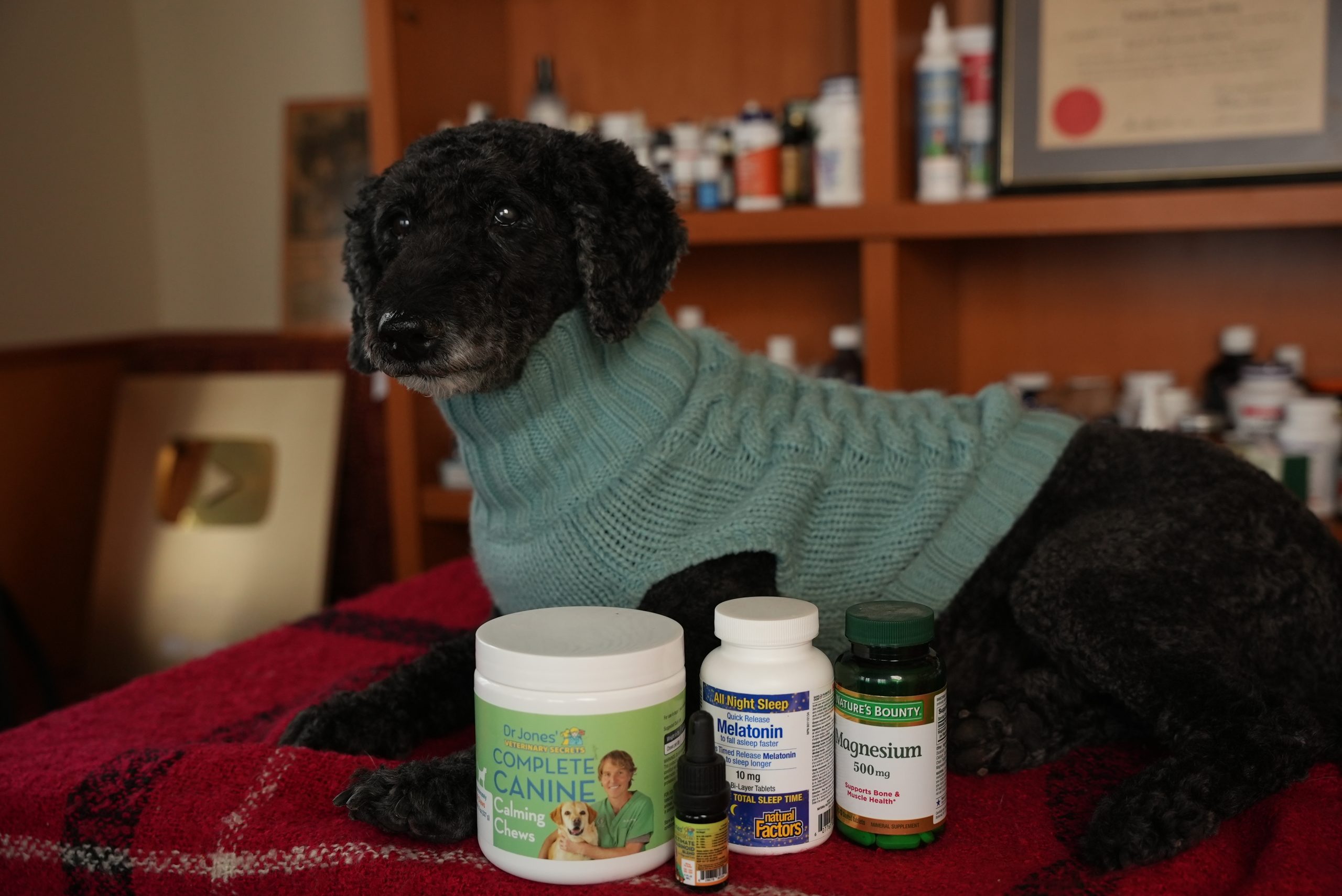Anxious Dogs? Try These 7 Vet-Approved Tips to Ease Holiday Stress!
Helping Your Dog Overcome Holiday Anxiety: Natural Solutions
The holidays, especially this time of year, can be a serious source of anxiety for our dogs. In this video, I’m going to walk you through the common causes of anxiety in dogs, why it’s so important to treat it, and what you can do to help your dog during stressful times like these.
Why Does Holiday Anxiety Happen?
With the holidays come changes in routine: guests visiting, loud music, parties, and new experiences. For dogs, these changes can trigger anxiety. Take my poodle, Tula, for example. When there’s a knock at the door, she starts barking and shaking. This is a clear sign of stress. You might notice her trembling, her breathing becoming faster, or her retreating to a quiet spot. Tula just wants to be away from whatever is causing her anxiety.
Anxiety can be uncomfortable for our pets, and for that reason alone, it’s essential we treat it. But beyond that, anxiety in dogs has serious health consequences. When a dog experiences stress, their cortisol levels spike, which not only causes trembling but also suppresses their immune system. Chronic stress has been linked to a variety of health issues, including heart disease, diabetes, obesity, chronic inflammation, allergies, IBD, and even cognitive dysfunction. Dogs that experience long-term anxiety are more likely to get sick, develop viral infections, and even have shorter lifespans.
What Can You Do to Help Your Dog?
Here are some effective natural solutions I use to help Tula with her anxiety that you can try for your own dog:
1. Acupressure: The Third Eye Point
One of the most effective techniques I’ve found is acupressure. The third eye point, located between your dog’s eyes, is particularly helpful for calming anxiety. To use this technique, gently apply moderate pressure to the point between your dog’s eyes with your finger. I do this whenever Tula starts trembling, and you can already see her breathing slow and her trembling subside. It’s simple, but it works.
2. Swaddling: A Homemade Thundershirt
Swaddling is another technique that can help calm your dog. The concept is based on the Thundershirt, a tight-fitting sweater that applies gentle pressure across your dog’s body, which can have a calming effect. While you can buy a Thundershirt, I prefer using a snug dog sweater. You could even use a blanket to wrap your dog securely. This gives your dog a sense of security and can help reduce anxiety. It’s a simple and effective method that many pet owners find beneficial.
3. Music Therapy for Anxiety
Music has been shown to have a calming effect on dogs with anxiety. Classical music, in particular, has been found to help dogs relax. I play classical music specifically designed for dogs to help Tula calm down when guests arrive or when there’s a lot of noise. It can make a world of difference and is a relaxing solution for your dog.
4. Magnesium: A Natural Calming Mineral
Magnesium is another great, inexpensive option. It’s known to help with muscle cramps and seizures, but it also has sedative effects. Magnesium glycinate is the most effective form, and it can be added to your dog’s food. It’s especially useful for dogs with anxiety, but be cautious and start with a small dose as it can cause diarrhea in some dogs. For a 20-pound dog like Tula, I give her 40 to 50 milligrams twice a day.
5. Melatonin: The Sleep Hormone
Melatonin is well-known for helping humans sleep, but it can also be effective for dogs, especially for short-term anxiety. I give Tula melatonin about an hour before I know she’ll be in a stressful situation, like when we have company over. It helps take the edge off and allows her to feel less anxious. The typical dog dose is 2 milligrams per 10 to 20 pounds of body weight. For Tula, that means about 4 milligrams before stressful events.
6. CBD Oil: A Natural Anxiety Solution
CBD, derived from the cannabis plant, has been incredibly helpful for dogs with anxiety. It has virtually no side effects and is safe for most pets. I use Dr. Jones’s Ultimate CBD for Dogs and Cats, but any reputable CBD product can work. The dose I give Tula is about 3 milligrams per 10 pounds of body weight, twice daily. CBD can have a calming effect within 30 minutes to an hour, and I’ve seen excellent results with it.
7. Dr. Jones’s Complete Canine Calming Juice
Lastly, I’ve developed a calming juice that contains natural anti-anxiety ingredients like L-theanine (from green tea), valerian root, passionflower, chamomile, and melatonin. Tula gets a dose of CBD and this calming juice, and within an hour, she’s much more relaxed. It’s a great option to combine with other treatments for a more significant effect.
Wrapping Up: A Stress-Free Holiday for You and Your Dog
There are many ways to help your dog cope with holiday anxiety. Whether it’s acupressure, swaddling, music, magnesium, melatonin, CBD, or calming juice, there’s a solution for every dog. I encourage you to try one or more of these methods to see what works best for your dog. By addressing anxiety, you can ensure that both you and your dog have a much more enjoyable holiday season.
Thanks for watching, and be sure to subscribe to Veterinary Secrets for more natural solutions for your pet’s health and wellness. Click the link to subscribe and hit the bell for notifications!

